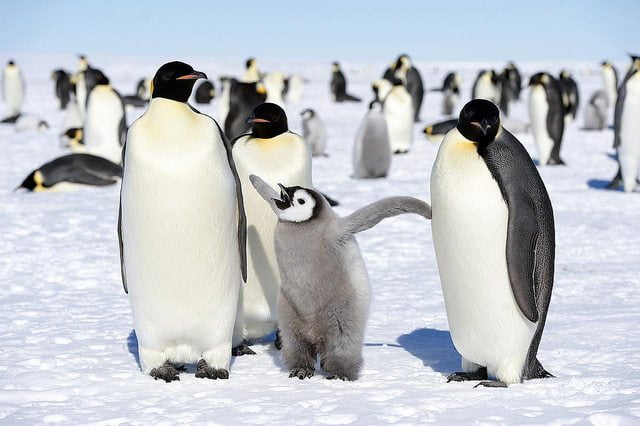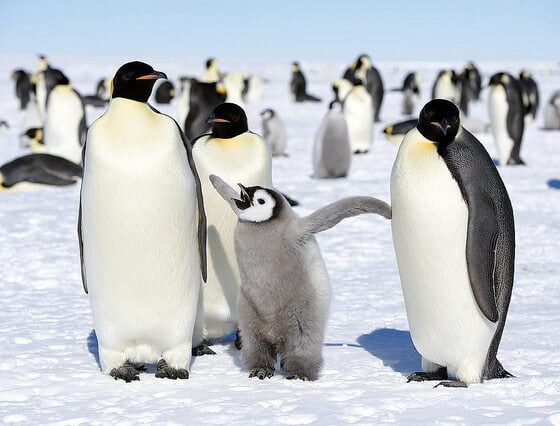

Environment
Giant penguins roamed Antarctica 37m years ago, fossils reveal
Newly uncovered fossil evidence suggests that giant penguins once roamed Antarctica, around 37 million years ago.
Standing at around 2m, alaeeudyptes klekowskii would have been taller than most humans. Experts estimate the flightless bird would have weighed in at around 115kg.
For comparison, emperor penguins, the largest penguins still alive today, reach 1.4m at most, and can weigh around 45kg.
Researchers have not been able to piece together a full skeleton, but from fragments found at the fossil-rich Seymour Island have been able to estimate the giant’s stature.
“This is definitely a big penguin,” Dan Ksepka of the Bruce Museum told New Scientist.
According to a study published this week, some of the long-dead bird’s modern day relatives may soon disappear into the fossil record themselves.
The international project found that all 18 surviving penguin species are increasingly threatened by of a combination of manmade factors, including climate change and overfishing
In 2013, eleven penguin species were officially listed as ‘threatened’ by the International Union for Conservation of Nature (IUCN), with another two listed as ‘near threatened’.
Photo: Christopher Michel via Flickr
Take our 2014 reader survey and you could win an iPad, Kindle or donation to a charity of your choice.
Further reading:
Emperor penguins at extinction risk because of climate change
All penguin species at risk because of human activity
Penguins scale cliffs to escape climate change
Climate change major threat to biodiversity, study says
Climate change linked to penguin chicks deaths in Argentina


 Features10 months ago
Features10 months agoWhat is the Eco-Friendliest Option to Wash Your Dishes?

 Environment12 months ago
Environment12 months agoBuilding a Career in Green Construction: Tips and Insights

 News11 months ago
News11 months ago5 Ways Fleet Maintenance Software Can Help Businesses Be More Eco-Friendly

 Features10 months ago
Features10 months agoAddressing Pressing Ethical Concerns with Crypto Exchanges






























